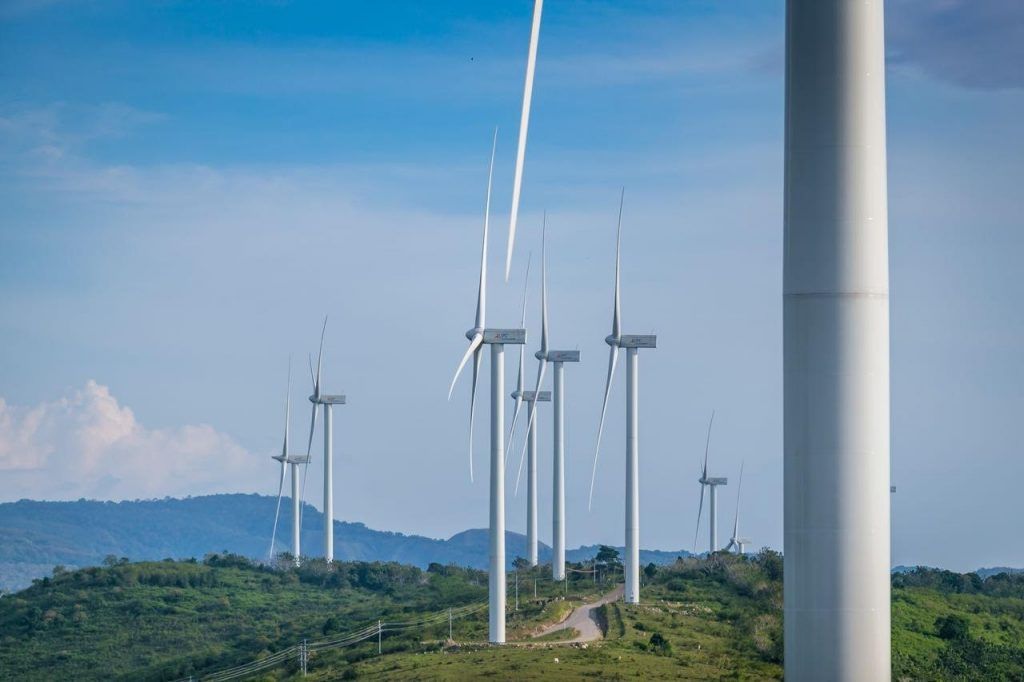Author: Agus Tampublon
Editor: Pamela Simamora
The main road in Sidenreng Rappang Regency (often abbreviated as Sidrap) in South Sulawesi on that night is particularly memorable for its resident. A policeman on his motorcycle, with its police lights on and a loud siren that could be heard from the distance, driving through the night. He was guiding several heavy trucks with unusual cargo. Each truck was carrying part(s) of a wind turbine. In total, there are thirty wind turbines to be installed, with each turbine has 80 meters tall tower and 57 meters long blade.
Wind farm Sidrap is the first utility-scale wind farm ever constructed in Indonesia. It marks an important milestone for renewable development in Indonesia. Having a total installed capacity of 75 MW, this wind farm is the biggest in Indonesia, even in South East Asia. The Indonesian utility company, PLN, expects to power around 67,000 a 1,300 VA-house with the electricity from this wind farm. For the government, this installation means catching up to Indonesia’s Energy National General Plan (RUEN) target for wind installation by 2025, which is 1.8 GW.

Installed wind capacity from Sidrap contributes only around 4 percent out of this 1.8 GW target. To catch the remaining 96 percent, many more wind farms need to be built. Around 300 km away to the south, for example, in Jeneponto Regency, South Sulawesi, a new wind farm with a capacity of 72 MW has been built. However, this farm is still waiting to be connected to the grid. PLN, in one of the Indonesian online newspaper, gave a statement, that they are waiting for a capacity upgrade in hydropower plant Poso (from 300 to 550 MW) before connecting this wind farm. Moreover, in a separate interview, a representative from PLN also added, that they can only accommodate these two wind farms connection to the existing grid due to its intermittency. Is that really the limit? Or can more wind farms be built in this system to help meet RUEN’s target?
Both Sidrap and Jeneponto wind farms belong to Sulbagsel electricity system. When Poso’s hydropower plant upgrade is completed, and Jeneponto is connected to the grid, Sulbagsel system will have total 1,569 MW total installed capacity, where 147 MW (or 9.4%) of it is variable renewable energy. This number is considered small compared to the considerable wind potential in South Sulawesi at 4.2 GW. With those two wind farms, variable renewable energy (VRE) generation becomes noticeable to the system operator, but the impact should still be moderate. That means, existing power plants and grids can handle this if we make them more flexible in handling the variability and uncertainty.
To increase the flexibility, PLN should use VRE as a baseload, while coal-fired power plant (CFPP) as a peaker, with premium tariff agreed on the Power Purchase Agreement (PPA). The premium tariffs should be sufficient to cover the cost required for retrofitting the existing CFPP and reducing its capacity factor. To address the issue of revenue uncertainty for CFPP used as “peakers”, the government might still use the take or pay mechanism which specifically determines the operational schedules for these “peakers.” However, it should also be evaluated whether paying the premium tariffs will be more costly than shutting down the CFPP.
Another option is to redesign the PPA. PPA, along with fuel purchase contract, can play a crucial role to facilitate the integration of renewables and increase the flexibility in the power system. Long-term, fixed-price PPAs offer a degree of certainty to both the investor and the purchaser but limit the ability of the system operator to respond to rapid changes in the power supply. When there is abundant supply from VRE, PLN still has to pay for the electricity generated from the thermal power plants (take-or-pay). The take-or-pay contract, therefore, creates the inflexibility for PLN to absorb more VRE into the network. Other alternatives are to use storage systems and demand-side management.
The renewable energy future is promptly becoming the present. To prepare a future with more shares of low-cost renewables, it is essential to focus on enhancing system flexibility. For Indonesia, it could mean retrofitting the existing coal-fired power plants, rearranging PPA contracts, flexible demand, and storage, and changes the rules and market that govern power plants dispatching.

